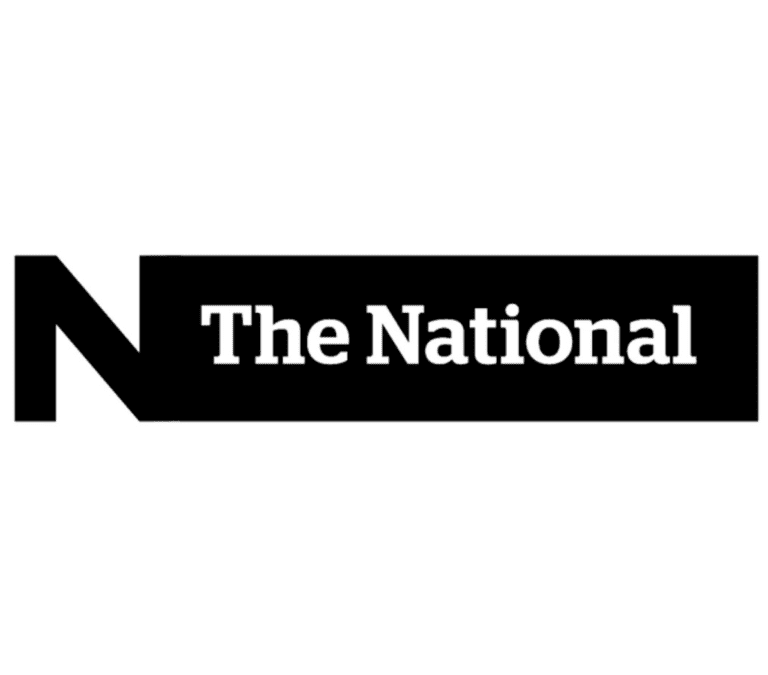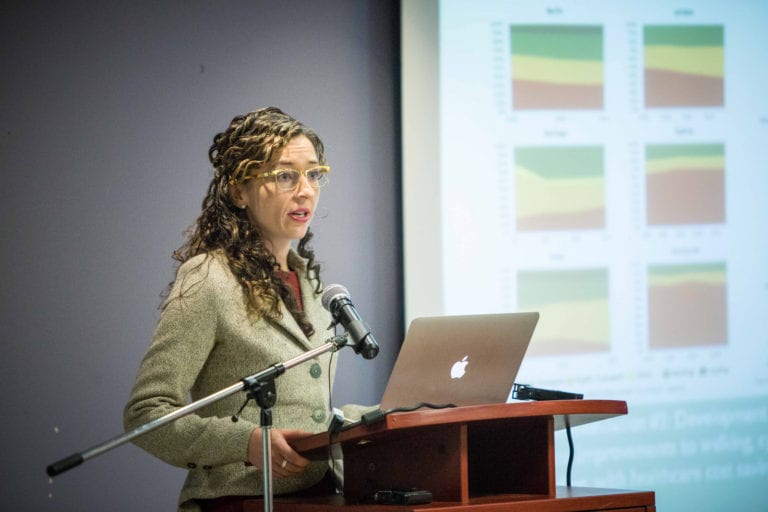
Doctor Sees People Suffering “Eco Grief”–anxiety and sadness about climate change
Interview with CBC Toronto’s Metro Morning about a national survey in Greenland, and how her community of Yellowknife has responded to its own climate worries.

Interview with CBC Toronto’s Metro Morning about a national survey in Greenland, and how her community of Yellowknife has responded to its own climate worries.

Dr Danielle Martin “phones a friend” to consult Dr Howard about the health impacts of climate change, including Lyme Disease, hay fever, wildfires and more.

On my way home from COP24 in Poland I stopped by the Agenda studio to talk LancetCountdown 2018 and about how discussing climate change as what it is—a health issue, can help to get us all pulling in the same direction towards a healthy response.
Although I trained mostly in large academic centres, I’ve spent much of my medical life practicing at the remote end of bumpy highways. There is an elegance to it—an instant humility brought about by limited resources, a ‘we’d better stick together or we’re sunk’ solidarity amongst staff that evaporates much of the posturing that can
Chainsaw Buyback: Just Transition in the Bornean Rainforest One of my take-homes from attending the COP23 climate change negotiations in November was just how strongly environmental and labour groups are now, rightly, pushing for a “Just Transition†to ensure that workers are supported as we move from a fossil-fuel economy to a low-carbon one.
Morning Meeting All staff, including people in charge of healthcare, conservation, agriculture, driving, education, finances and more, get together at 8AM Monday to Friday at ASRI for morning meeting. Hoping to be as helpful as possible during my visit, I’d emailed my friend Dr Anne-Marie Pegg, who has a tremendous amount of experience heading up
Consistent with rapid deforestation rates in much of the Bornean rainforest, more than 70% of the lowland forests within Gunung Palung National Park’s buffer zone were deforested between 1988-2002. During sequential surveys done by ASRI/HIH, they found 1,350 logging households around the park at baseline in 2007. ASRI’s clinic and conservation program opened in 2007—and
ASRI/Health in Harmony take data from their village surveys to determine which widowed women in the area may benefit from goats. The women receive 1-2 goats, then repay ASRI in goats once the animals procreate. There are about 200 widows in the program. A goat sells for about 2-2.5 million rupiah in an area with
Paying for Healthcare With Manure? For real. ASRI-Borneo’s head MDÂ Dr Nomi explains how rainforest-conservation incentives are built into their hospital’s payment scheme. Imagine if all healthcare systems took Planetary Health into account?
We arrived here last week, sweaty, towing our children, to find two giant posters of icebergs (I took them to be the Arctic on our first day–it is possible they are at the South Pole.)  It was astonishing to come to the jungle and find icy iconography.  We definitely don’t have any photos of orangutans
Why did we come all the way to Borneo? Â Well…I was intrigued enough by ASRI/Health in Harmony’s integrated health and conservation project in Sukadana that I wanted to see it for myself. Â The basic idea is that in this rural area in Western Kalimantan, Borneo, providing affordable healthcare allows people to stop cutting down the
We arrived in Sukadana at  Alam Sehat Lestari ‘s hospital about a week ago.  We made the 2-2.5 hour drive from Ketapang along a two-lane road, driving on the opposite side of the street as we do in Canada. We saw lots of palm trees, quite well-kept houses. Corrugated metal roofs, tiled ones; tile and stucco
At some point in my life as an ER doc in a small town I started noticing sirens…but only when I’m within a day or two of working a shift. Â The rest of the time my brain blessedly filters them out completely. I hadn’t noticed any since leaving Yellowknife, and then we got off the
As Jenie described it and his cousin Andy later showed us, as you head to Camp Leakey, the park is on your right, and a series of research stations and villages are on your left. Branching off every so often on the left are irrigation channels about 2 metres wide. They supply water to palm
We wanted to spot some orangutans in Tanjung Puting National Park before heading to Health in Harmony and ASRI’s hospital in Western Kalimantan, Borneo, so we carried life jackets for the kids with us all the way from Yellowknife.  (ER MD job hazard=safety police tendencies…yep– everyone loves to travel with me!) Mr Head-Packer sighed, but
“Di manakah toilet?†We put our 4 year-old Vivi in charge of learning how to ask directions to the bathroom in Indonesian. Important job. Needed the best possible chance of being remembered. I figured she has the youngest mind, so given language-learning aptitudes it was most likely to stick there. And it did. For both
The lines between humanitarianism, environmentalism and Planetary Health are blurring as the impacts of environmental change on human health become more clear and the need to respond to them more urgent. I met Steve Cornish when he was the head of MSF (Médecins Sans Frontières–Doctors Without Borders) Canada and I was a doctor returning from

“Canada, the UK and partners announced a global alliance to phase-out coal power at COP23 in Bonn, Germany.”

“Courtney Howard, right, presents a letter on behalf of more than 150 Canadian doctors and medical students to Catherine McKenna, Canada’s minister of Environment and Climate Change at the COP 21 conference in Paris. (Courtney Howard/Twitter)”